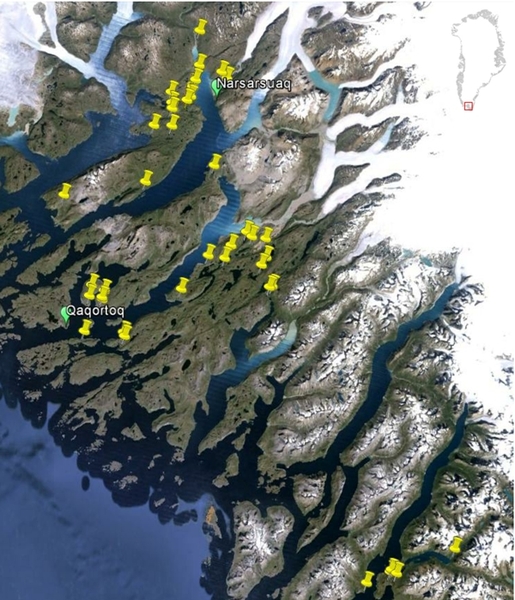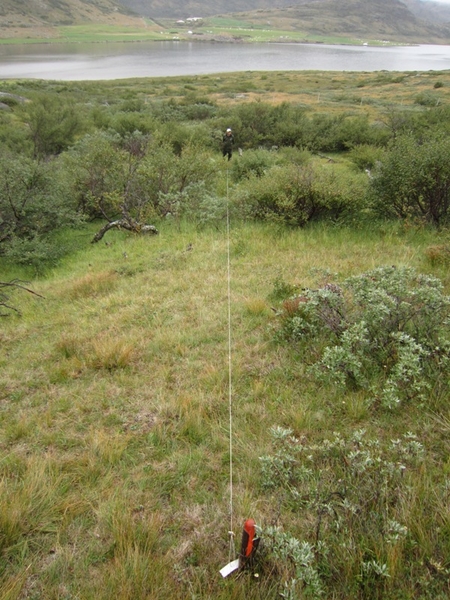Vegetation studies in South Greenland
Vegetation studies in South Greenland
During the 1980’s several botanical studies were carried out in South Greenland (Figure 1) based on recommendations from a working group on the environment and sheep farming in Greenland (“Arbejdsgruppen vedrørende miljø og fåreavl i Grønland”). The main task of this group was to examine the possibility of developing profitable sheep farming and to evaluate the consequences of the farming on the vegetation.
Herbivores like sheep can have a huge effect on the number of organisms and the species composition in an area. Hence, a number of fenced exclosures were established in order to study the vegetation development (succession) in un-grazed plots compared to grazed plots (Figure 2). The plots have been visited and analyzed at irregular intervals since they were established in the 1980’s.

Figure 1. Location of all vegetation plots in South Greenland. The map includes plots only visited once and plots that have been abandoned.
Botanist Jon Feilberg was the main driving force behind the establishment of the exclosures and the subsequent vegetation studies. Since the 1980’s he visited and studied countless locations in South Greenland. From 2009 onwards this work was carried out in cooperation with researchers from the Greenland Institute of Natural Resources and DCE (Danish Centre for Environment and Energy). In recent years the work has focused on the effect of grazing on e.g. biodiversity.
On a general level the project has collected data on vascular plants, mosses, lichens, microarthropod diversity and food web structure, nutrients in the soil as well as soil temperature. The local geology, the local climate, local weather conditions, human impact and the interactions between the different trophic levels in the food web are all parts in determining the biological diversity in an area.

Figure 2. The effect of a fence at plot 227 in Sammisoq (there is no grazing on the left side of the fence). The plot was fenced in 1992.
The vegetation analyses form the groundwork for future surveillance of biodiversity and monitoring of the effects that large grazers have on the biodiversity of an area (Figure 3). The present studies therefore provide essential knowledge for the understanding of interactions between large grazers and vegetation in Greenland.

Figure 3. Vegetation transect at Skyggesø, Vatnerhverfi. The plot as established in 1987.
Technical report
Data and a few analyses from the vegetation studies in 2009 and 2012 are presented in a recently published technical report from DCE. Effects of large herbivores on biodiversity of vegetation and soil microarthropods in low Arctic Greenland
The project was financed by DANCEA, Environmental Protection Agency, Denmark.
Data
The collected data are presented in table 2 in the technical report. Data from the two types of vegetation analyses i.e. pin-point analyses and Raunkiær circle analyses are free for download here.
Further reading
Vegetations-overvågning i Sydgrønlands fåreholderdistrikter 2012 (in Danish only)
Contact
Katrine Raundrup
kara@natur.gl

